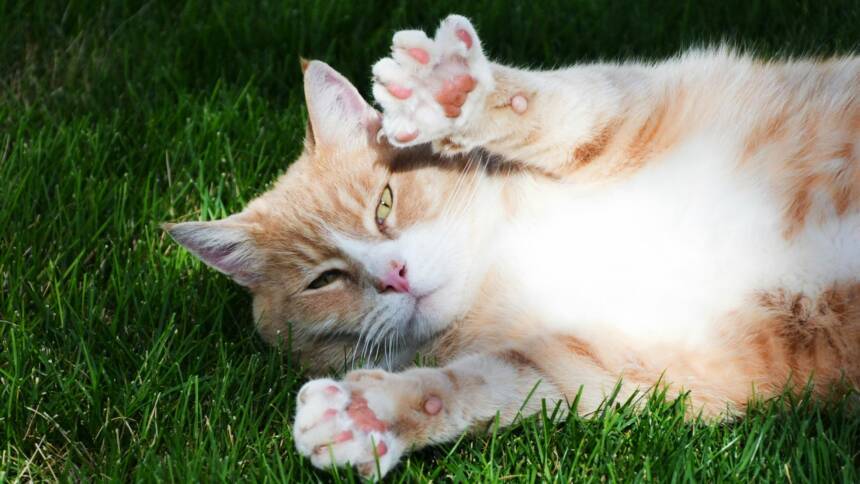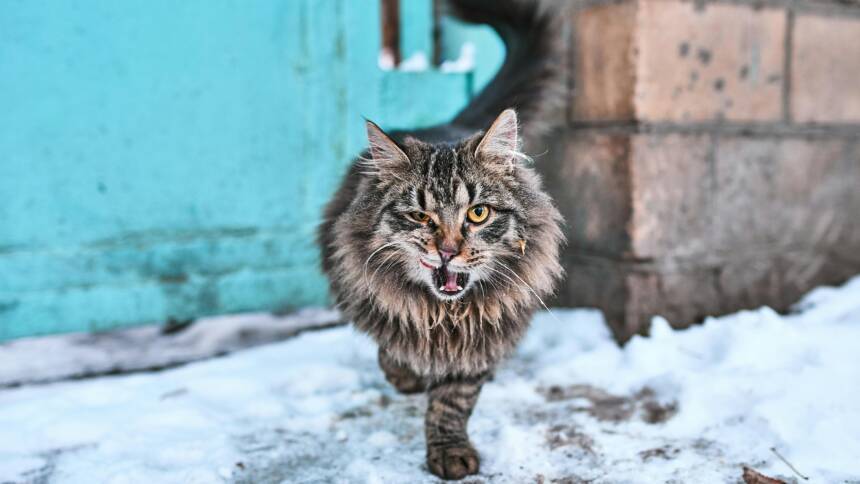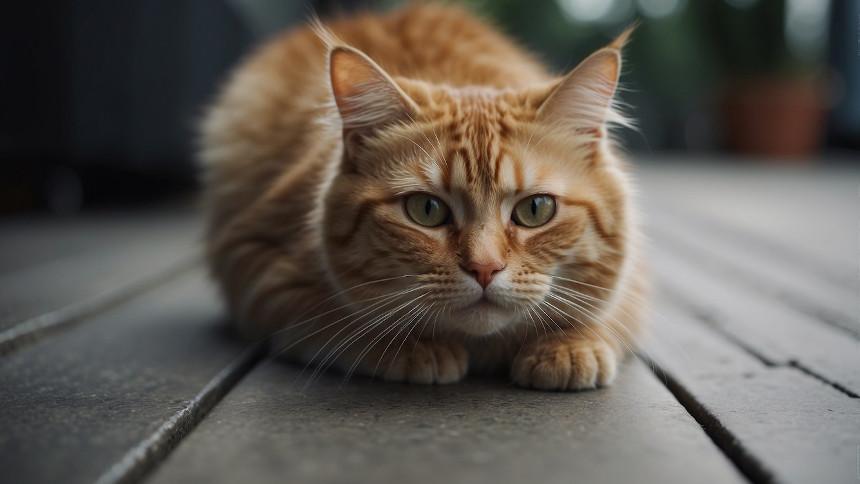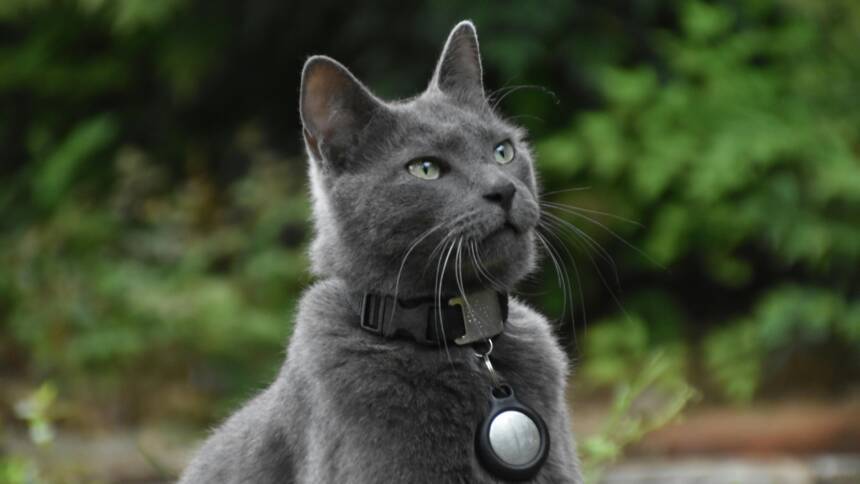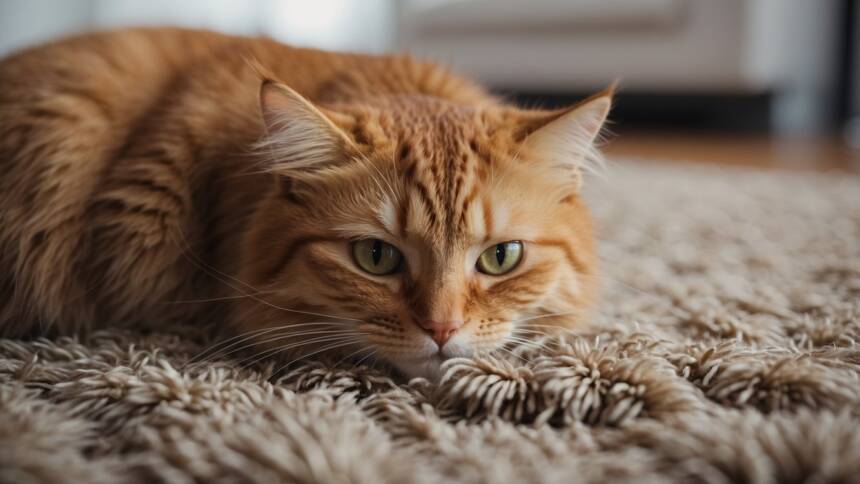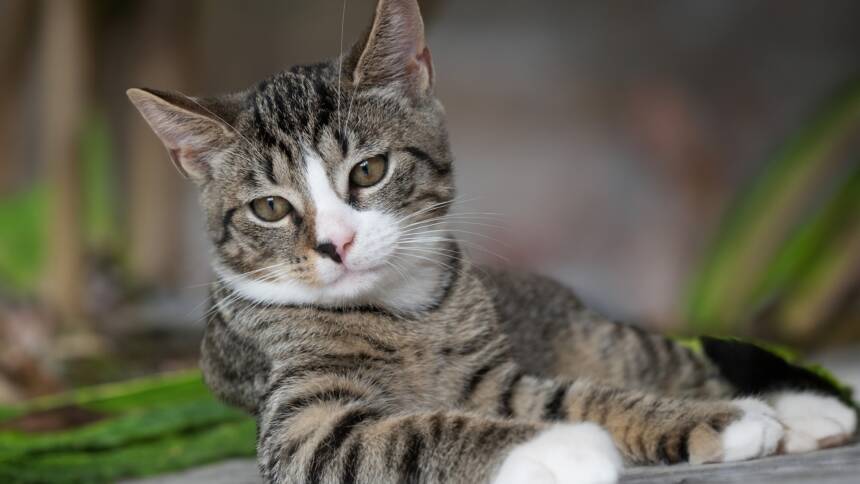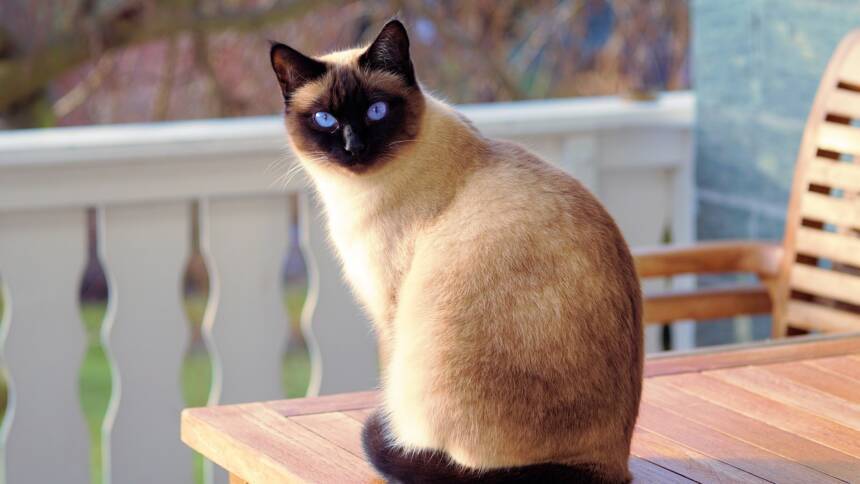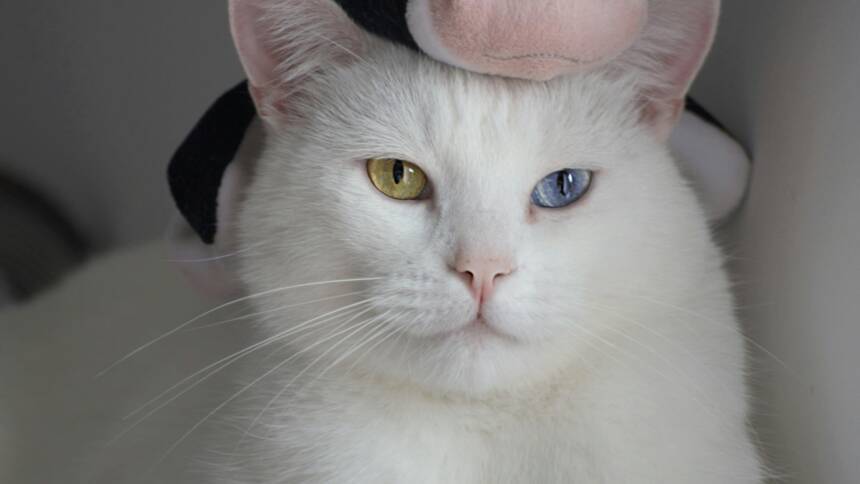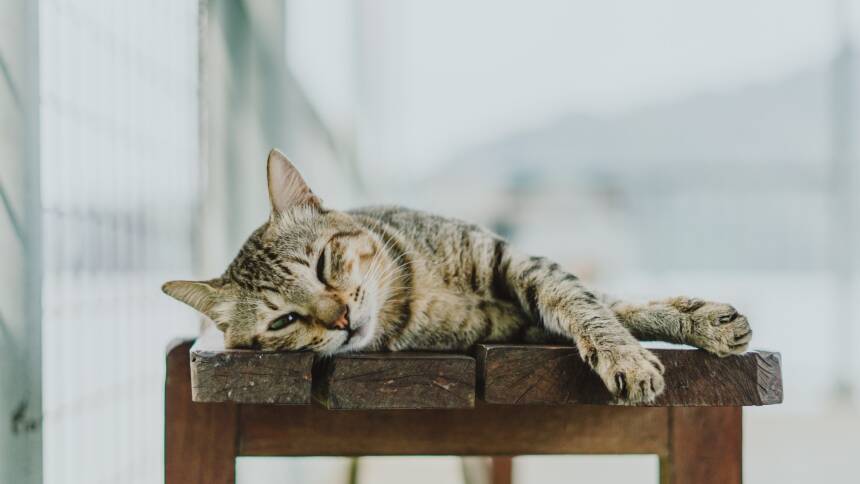Cat owners have long been fascinated by the various quirks and characteristics of their feline companions. Among the traits observed, paw shapes have garnered attention for their supposed links to cat personality types. While the idea may sound whimsical, some enthusiasts believe that just as humans have unique fingerprints, cats’ paws could offer insights into their behavior and temperament.
Recent discussions among pet lovers have centered around a concept known as “pawmistry,” which suggests that the shape of a cat’s paw pads could be indicative of certain personality traits. Authors and cat behaviorists have proposed classifications such as the “Gentle Guardian” or the “Mystical” cat based on these physical characteristics, offering a playful yet intriguing angle on understanding our feline friends.
It’s important for cat owners to approach these theories with a sense of curiosity and fun, rather than taking them as scientific fact. While there is no direct scientific evidence to firmly establish a connection between paw shapes and personality, observing these features can be another way to bond with and appreciate the unique nature of each individual cat.
Understanding Cat Paw Anatomy
Cat paw anatomy is both fascinating and complex, encompassing structures like paw pads, bones, tendons, and various distinctive features that vary between front and back paws. This section will provide an insight into the intricacies behind these vital components of feline anatomy.
Anatomy of Paw Pads
Cat paw pads are comprised of thick layers of fatty tissue, which serve to cushion and protect the internal bones and tendons during locomotion. The underside of each paw contains these pads, which are integral to a cat’s sense of touch and also house sweat glands. These glands play a crucial role in thermoregulation and help maintain moisture in the paws.
Bones and Tendons in Cat Paws
The underlying structure of a cat’s paw includes numerous bones and tendons that provide mobility and stability. A typical cat paw consists of:
- Phalanges: the bones of the toes
- Metacarpal (front paws) or metatarsal (back paws) bones: these form the middle part of the paw
- Carpal (wrist) bones: found only in the front paws
Tendons connect these bones to muscles, facilitating movement such as extension and retraction of claws and the graceful flexing of the paw.
Distinctive Features of Front and Back Paws
Cats have distinctive front and back paws, each with features adapted to specific functions. The front paws possess an extra toe, known as the dewclaw, which sits higher on the paw and aids in gripping prey and climbing. Typically, a cat’s front paws are more dexterous and can be used for delicate tasks. The back paws, while lacking this extra digit, are stronger and provide the majority of power for running and leaping. Both sets of paws have claws that are retractable, allowing them to remain sharp for catching prey and for self-defense. The presence of scent glands between the toes of a cat’s paw is also notable, playing a role in territory marking and communication through scent.
Exploring the Cat Paw Shape
Cat paws play a significant role in feline behavior and can vary across breeds, displaying a fascinating array of shapes.
Variations in Paw Shapes Across Breeds
Cat paws come in different shapes that can be generally categorized into rounded, flat-topped, and heart-shaped. For instance:
- Rounded Paw: Commonly found in breeds such as Persians and Ragdolls, rounded paws are often associated with a calm demeanor.
- Flat-Topped Paw: Breeds like the Maine Coon might exhibit this paw shape, and such cats often display a protective nature.
- Heart-Shaped Paw: Although less common, some believe this shape indicates an affectionate personality.
The shape of a cat’s paw, including the digital beans (the small pads on the bottom of their toes), as well as the larger metacarpal bean (the big pad of the paw), can differ. The dewclaw bean, which is on the inner side of the paw similar to a thumb, and the carpal bean found higher up on the wrist might be more prominent in certain breeds.
The Significance of Toe Beans
The pads of a cat’s paw, affectionately termed “toe beans,” are distinctive and have attracted interest for their potential connection to feline behavior. These include:
- Digital Beans: That vary in number across breeds, with most cats having five on their front paws and four on their back paws.
- Metacarpal Bean: This large pad helps absorb shock when cats walk, jump or land.
- Dewclaw Bean: Some link its size to a cat’s climbing ability, although evidence for this is anecdotal.
- Carpal Bean: Located on the back of the front legs, these are less visible but serve as extra padding.
Personality Traits and Paw Preferences
Personal temperament in cats can often be linked to their dominant paw, much like handedness in humans correlates with certain cerebral functions. Research indicates a connection between which paw a cat favors and their behavioral tendencies.
Paw Preference and Personality Types
Cats exhibit a clear preference for their left or right paw when engaging in activities such as reaching for treats or toys. This preference is considered analogous to human handedness and suggests that, like humans, lateralization in cats could be associated with their personality and behavior. Studies have shown that this paw preference is split nearly equally across the feline population, with roughly one-third showing a preference for the left paw, another third for the right paw, and the remaining cats displaying no particular preference.
Left-Paw-Dominant Cats are often said to show different personality traits compared to their right-pawed counterparts. In general, left-pawed animals might be more assertive and bold, mirroring some aspects of the ‘right-brain’ associated with creativity and emotion in humans.
Right-Paw-Dominant Cats may tend to be more cautious and reserved. This mirrors the ‘left-brain’ association with logic and analytical thinking in people.
Characteristics of Left-Paw-Dominant and Right-Paw-Dominant Cats
- Left-Paw-Dominant:
- Often more explorative and show higher levels of energy.
- May react more strongly to stimuli and can show signs of a more ‘reactive’ personality.
- Right-Paw-Dominant:
- Typically more reserved or tentative.
- Could display a more ‘thoughtful’ disposition, perhaps taking time to assess situations.
Research indicates that gender may also play a role in paw dominance: female cats are more likely to be right-paw-dominant, whereas males tend to lean toward left-paw dominance. It’s emphasized, nonetheless, that individual variances are vast, and myriad factors besides paw preference will influence a cat’s personality.
Behavioral Insights from Cat Paws
Cats’ paws offer a trove of behavioral insight, revealing clues to their personality traits and habitual actions. By observing the way they use their paws in various activities, one can gain a deeper understanding of their individual tendencies and emotional states.
The Art of Kneading
Kneading is a rhythmic motion cats make by pushing in and out with their paws, alternating between left and right. This behavior often harks back to kittenhood when they knead to stimulate their mother’s milk flow. As adults, cats continue this action as a sign of contentment, usually accompanied by purring. It can also be a marking behavior, as their paws have scent glands that release their own unique signature.
- Personality Traits: Cats that knead frequently are typically affectionate and seek comfort in their environment or human companions.
Claw Usage in Cats
Cats possess retractable claws, which they skillfully use for various activities. Not only are these claws critical for self-defense, but they are also essential for hunting, climbing, and grooming.
- Grooming: Cats use their claws to clean their fur and remove debris. The act of grooming is meticulous, and can be an indicator of the cat’s state of mind—excessive grooming, for example, might signal stress or discomfort.
- Scratching Post: The use of a scratching post is a direct insight into a cat’s need to exercise their claws, mark territory through visual signs and scents, and remove the dead outer layer of their nails.
Retractable claws also serve as an indication of a cat’s mood. A relaxed cat will often keep their claws sheathed, while an agitated or threatened cat may extend them as a warning or in preparation for defense.
Cat Paw Comparison with Dogs
In exploring the distinct characteristics of cat and dog paws, one can glean insights into their differing behaviors and adaptability in various environments.
Anatomical Differences Between Cat and Dog Paws
When comparing the paws of cats and dogs, the structural variations are designed to complement their respective lifestyles and natural behaviors.
- Size and Shape: Cat paws tend to be smaller and more rounded, which aids in their agility for climbing purposes. On the other hand, dog paws are typically larger with a more extended, oval shape that provides a stronger foundation for running and digging.
- Claws: The claws of cats are retractable, enabling them to remain sharp for hunting and minimize noise when stalking prey. Conversely, dogs have non-retractable claws which are used for grip during movement and are more blunt because they are always exposed.
- Paw Pads: The paw pads of a cat are soft, providing them with cushioning and enhanced grip crucial for their climbing and jumping activities. Dogs have more robust paw pads better suited for endurance in running and withstanding rough terrain.
Paw Care and Health
Caring for a cat’s paws involves regular maintenance to prevent common problems and understanding their role in a cat’s overall well-being. The paws serve not just as shock absorbers, which protect joints from impact, but also contain scent glands and aid in temperature regulation.
Common Paw Problems
Cats may encounter various paw issues that need attention:
- Infections: Cuts or punctures can lead to infections, signified by swelling, redness, or discharge.
- Parasites: Fleas and ticks can lodge between the toes, causing irritation and disease.
- Pad Burns or Frostbite: Extreme temperatures can damage the paw pads, which provide essential cushioning.
- Overgrown Claws: Neglected claws can grow into the paw pads, causing pain and infection.
Maintenance and Grooming Tips
Regular grooming and inspection are key to detecting issues early and keeping a cat’s paws healthy.
- Cleaning: Wipe paws with a damp cloth daily to remove debris or litter stuck between the toes.
- Claw Trimming: Regularly trim nails to prevent overgrowth and protect the cushioning pads from injury.
- Inspection: Check for signs of injuries or anomalies, such as swelling, tenderness, or cuts.
- Moisturizing: Apply a vet-approved feline paw balm to keep the pads from cracking, especially in dry weather.
By following these tips, pet owners can help ensure their cats’ paws remain healthy, contributing to their overall happiness and mobility.
The Cultural Significance of Cat Paws
The shape and appearance of a cat’s paws have long held cultural importance, with practices such as “pawmistry” claiming to read personality traits from them, and historical symbolism imbuing them with various meanings.
Pawmistry: Reading Cat Paws
In a practice playfully termed “pawmistry,” akin to palmistry in humans, some enthusiasts believe that a cat’s paws can reveal insights into their temperament and behavior. Originating from a combination of folklore and contemporary interpretations, this niche pursuit analyzes the shapes, pad patterns, and even dominance (left-paw vs. right-paw use) to assign personality types to feline companions. Gentle Guardian and Emotional Explorer are examples of the types some pawmists might identify. It’s essential to note that while pawmistry is taken with enthusiasm by some cat lovers, it’s generally viewed as a lighthearted activity without scientific backing.
Cat Paws in History and Symbolism
Historically, cat paws have been a subject of fascination and symbolism in various cultures. In ancient times, some cultures considered cat paws as windows into the soul of a cat, a concept that intertwines with the mystical reputation of cats throughout history. In Japanese culture, studies on cat paws and the interpretation of their patterns stem from a tradition of closely observing nature and ascribing meaning to its various aspects, reflecting beliefs about the unity between living beings and their environment.
Each of these cultural interpretations showcases the special place felines hold in human society, whether perused scientifically or through the lens of tradition and folklore.
Photogenic Cat Paws
Capturing the beauty of cat paws in photography requires close attention to various elements such as color and texture. When it comes to the front paws, they often bear the weight of the cat’s playful and curious nature, usually being more active in photos. Conversely, back paws tend to appear more relaxed and can add a sense of calmness to the image.
Photography enthusiasts often prefer cats with distinctive color patterns which can range from solid hues to a mix of colors. The contrast of fur color with paw pads can create a striking image. The allure is not just in color, but also in the symmetry and shape of the paws.
| Aspect | Front Paws | Back Paws |
|---|---|---|
| Usage | Grasping, touching | Supporting, stabilizing |
| Position in Photos | Often extended or reaching | Typically tucked or stretched out |
| Color Contrast | High visibility of pads | Lower visibility of pads |
To capture the true essence of a cat’s paws, photographers should focus on:
- Lighting: Natural light brings out the details and colors.
- Background: Simple backgrounds make paws stand out.
- Posture: Relaxed posture can make paws appear more photogenic.
Cat paws, being intricate and expressive parts of their body, hold a certain charm that resonates with cat enthusiasts. When captured effectively, they not only showcase the cat’s personality but also contribute to creating a memorable and eye-catching photograph.
